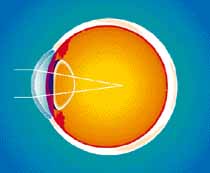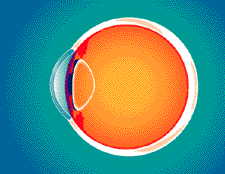The Right Expectations

| Staring Into a Laser Beam
The Right Expectations |
 |
| --Scott Rainey | |
|
OK, you've read this far which means you're more than a little interested
in the topic and you're probably expecting some advice.
Laser Eye Surgery is not like a new pair of glasses with a fresh prescription which will instantly make the world perfectly clear the moment you put them on. This is not like a new pair of contact lenses which may be uncomfortable for a few hours then become unnoticeable as the world resolves into pretty good focus. You are messing with your main sensory organ, the one which occupies more of your brain's CPU space than any other. Laser Eye Surgery is a carefully engineered wound to the part of your body with more nerve endings than any other. There will be discomfort. There may be a lot of pain Do not rush into this decision. Your vision will be worse for a while, ranging from days to months, depending on how you heal, as well as how you perceive the world through your eyes. You will be far-sighted for a while as your eye heals from surgery. This will be true for everyone, but especially for those over 35 who already wear bifocals or reading glasses. Buy yourself some inexpensive ($6.00 to $15.00) +1.25 reading glasses prior to your surgery even if you're under 35 and not ready for bifocals. If you are nearsighted, you will no longer have the option of taking off your glasses to focus on something very close. You'll forget this warning of course, but as soon as you look at something after surgery, you'll remember it in spades. Go To The Free Seminars, go to more than one and when you select your doctor, go again. If your prospective doctor doesn't speak to the issue of potential complications and risks, find another. Do Your Research While not easy to find, and usually written for doctors, even a $250 book makes sense when contemplating such a radical procedure.
Elander, Rich & Robin 695 pages (130 plates in full color) 8-1/2 x 11 - Hard cover W. B. Saunders Company ISBN 0-7216-6552-7 $245.00 March 1997
Color Atlas / Text of Excimer Laser Surgery - The Cornea After surgery and full healing, you may still need glasses in some circumstances to get best vision. This could be for reading or long distance vision depending on your actual results, you age and other factors. If you are over 40 you're still going to need reading glasses. Buy some cheap ones (+1.25 diopter for $6-$25) right before your surgery even if the Dr. says don't. If you're a low myope, you will not see as good right after surgery as you did beforehand with glasses or contacts. It will get better and better over time. If you are a medium to high myope, you will be absolutely amazed at the improvement immediately. Your perception of improvement will be so immense you'll barely notice that eyes are still changing and improving as they heal. If you work with fine detail things will be pretty rough for a while as you heal, but things usually get a lot better quickly. Plan to get some transitional eyeglasses to bring you into best focus as you heal so you can maintain your high quality work. If you don't work with fine detail if you don't read a lot or if you don't wear glasses all the time because you can live your life with some fuzziness; your satisfaction will be pretty strong immediately and it will get better and better. Your vision may ultimately be even better than you had before with best correction via glasses or contacts. Mine are thankfully, but it took 11 months to for me get there.
As Dr. Rich explains, the challenge is that we're changing the shape of living tissue. We cut some off, and a little grows back. When the excimer laser evaporates some of the cells of your cornea, a healing process begins that takes 12 or more weeks to complete. During that 12 weeks the shape of the cornea changes. This is a normal healing process. Because all human beings are unique individuals, the way each of us heals is different. The way we heal when we're children, teenagers, adults, middle aged, or elderly is also different. My friend Jim was 20/20 3 weeks after surgery. I took 12 weeks to get that good and got to better than 20/15 in 11 months. This time of far-sightedness is always there with PRK, PARK or LASIK. The way you heal from a cut finger or a scraped elbow, is illustrative of what happens as your cornea heals after being reshaped by an Excimer Laser Beam. Remember the last time you scraped some skin off your elbow? You healed pretty quickly, but after the last scab fell off, what was underneath was a small dent. The wound had closed, but the underlying skin had not fully grown back. The tissue was fragile and pink. In time it grew back almost completely and today the wound may be completely or nearly invisible.
|
Home Page
|
 Focus problem in a nearsighted (myopic) eye |
 Animated GIF of PRK process (91k) |